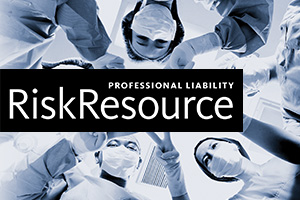
Providing safe care to children and avoiding liability is a top concern for most emergency department (ED) providers and facilities. ED use by children under age six is frequent, accounting for more than 30 million encounters and 24 percent of annual ED visits in the U.S., according to a 2012 National Report on Health Statistics.1 Three quarters of pediatric emergency visits are to hospitals that are not children’s hospitals.2 Recognizing this, the American College of Emergency Physicians (ACEP) currently offers its members an online course, culled from its 2013 scientific assembly entitled, “The Pediatric “Risk-Free” Emergency Department: Reducing Malpractice Exposure” (http://virtual.acep.org/ common/presentations.aspx/4/18/390).
Indeed, ACEP, along with the Emergency Nurses Association (ENA) and the American Academy of Pediatrics (AAP) published a Joint Policy Statement setting forth guidelines and the resources necessary for EDs to serve pediatric patients.3 According to the joint guidelines, the first essential for managing pediatric emergency care is to appoint physician and nurse coordinators for the care of children in the department. Having these coordinators in place supports responsibility for ensuring provider and staff competencies in pediatric care, implementation of risk management/patient safety/quality improvement activities, and development of appropriate policies and procedures for pediatric emergency care.
A useful self-assessment checklist to assess ED readiness to safely care for children has been developed based on the joint guidelines. The checklist is available online at the ENA website: http://www.ena.org/about/position/jointstatements/Documents/GuidelinesfortheCareofChildreninED2010.pdf.
Top areas of risk for pediatric emergency care include communication breakdowns during transitions of care and handoffs, barriers to obtaining adequate histories and presenting problems, and challenges with ensuring safe medication prescribing and administration. These areas are compounded when the culture in the ED is not conducive to teamwork and the work environment does not allow staff to speak up when there are concerns about safety and quality.
Strategies to address these top areas for pediatric safety improvement in the ED center on enhancing teamwork, implementing standardized communication tools, and using evidence-based safe practices. Resources to implement these strategies include the following:
TeamSTEPPS® – an evidence-based teamwork system to improve communication and teamwork skills in support of a culture of safety. Higher hospital patient safety culture survey scores have been associated with lower adverse event rates.4 TeamSTEPPS is freely available from the Agency for Healthcare Research and Quality. See http://teamstepps.ahrq.gov/.
ED “Safer Sign Out” protocol – this team-based intervention to improve safety and prevent communication failures during shift changes and care transitions that can lead to patient harm and liability is promoted by and readily accessible through The Emergency Medicine Patient Safety Foundation. See http://safersignout.com/.
Joint Commission Sentinel Event Alert: Preventing pediatric medication errors – this literature contains guidance on pediatric medication safety in the emergency department.5 See: http://www.jointcommission.org/sentinel_event_alert_issue_39_preventing_pediatric_medication_errors/.
There is increasing evidence of a significant correlation between the frequency of adverse events and malpractice claims. 6 Examination of serious safety events and liability claims can also reveal high-risk areas and diagnoses or conditions ripe for risk prevention efforts. Diagnostic error is a frequent allegation in claims involving pediatric patients, 7and conditions related to these errors include infections such as meningitis, appendicitis, and sepsis. Both cognitive and system factors contribute to diagnostic error.
Analysis of a high-profile ED case involving the death of a 12-year-old in New York from streptococcal toxic shock in 2012 revealed several possible cognitive and system factors leading to error in diagnosis. Possible contributing cognitive factors include: 8
- Availability bias: Gastroenteritis was prevalent at the time
- Received diagnosis: Reliance on diagnosis from referring provider
- Premature closure: Assuming first diagnosis is accurate without considering another
- Anchoring bias: Not considering new information/not listening to the patient
Possible contributing system and communication factors include:
- Initial vital signs lacked a temperature
- Discharge vital signs not reviewed by the physician
- Abnormal labs not reviewed or not acted on
Here are five strategies for mitigating these cognitive and system/communication factors and reducing risk of diagnostic errors that can result in patient harm and expose ED providers to liability include:
- Awareness of cognitive factors by ED providers, deliberate self-assessment, and cross monitoring with peers
- Use of algorithms and screening tools for high-risk conditions such as sepsis and abdominal pain
- Implementing decision support systems that prompt considerations of alternative diagnoses
- Auditing compliance with patient intake, assessment, and discharge procedures and correcting noncompliance
- Establishing protocols for communicating and acting on diagnostic results and assigning accountability for carrying out the protocols
Ongoing training and education in the care of children –ACEP, ENA, AAP, and other professional societies provide clinical education programs to develop and maintain pediatric competencies and skills.
What has been your experience regarding pediatric saferty in the ER? I look forward to hearing from you.
Kathleen Shostek, RN, ARM, BBA, FASHRM, CPHRM Sedgwick
References
- National Center for Health Statistics. Health, United States, 2012: With Special Feature on Emergency Care. Hyattsville, MD. 2013.
- Schappert SM, Bhuiya F. Availability of pediatric services and equipment in emergency departments: United States, 2006. National health statistics reports; no 47. Hyattsville, MD: National Center for Health Statistics. 2012.
- AAP Joint policy statement—guidelines for care of children in the emergency department. Pediatrics 2009 Oct;124(4):1233-43. http://pediatrics.aappublications org/content/124/4/1233.full.html.
- Mardon, et al. Exploring Relationships Between Hospital Patient Safety Culture and Adverse Events. Journal of Patient Safety, 2010. Vol. 6 (4) 226-32.
- Cadwell S. Pediatric medication safety in the emergency department. J Emerg Nurs 2008;34:375-7.
- Greenberg MD, Haviland AM, Ashwood JS, Main R. Is better patient safety associated with less malpractice activity? RAND Institute for Civil Justice, 2010. Available at http://www.rand.org/pubs/technical_reports/2010/RAND_TR824.pdf.
- Data Sharing Project 1985-2010. Physician Insurance Association of America (PIAA), Rockville, MD.
- Ryan R and Fischer S. Risk and Claims in Pediatrics: A case study in sepsis. Available online